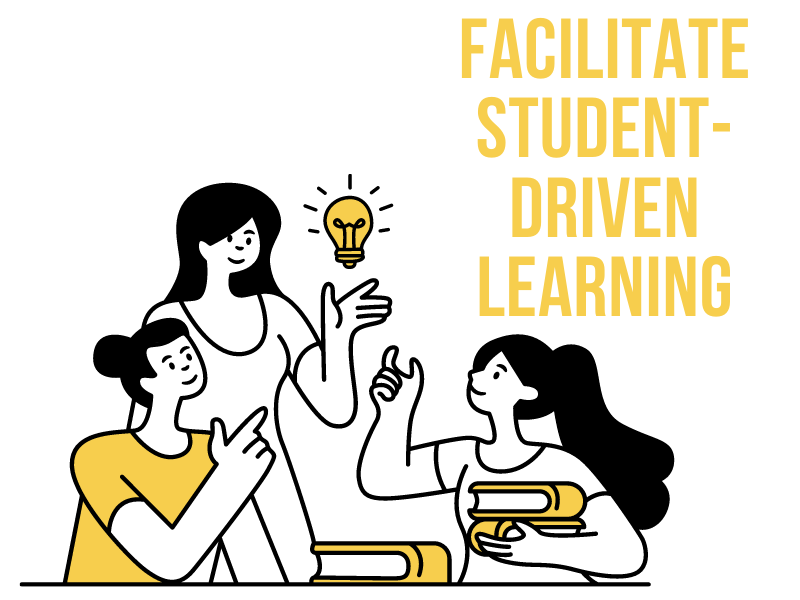As educators, one of our most formidable challenges is overcoming student apathy. When students lose interest in learning, it hampers their academic progress and potential for growth. To spark motivation and engagement, we should try to implement a diverse range of strategies. That’s where we come in! We’ve rounded up 20 effective tips for reigniting passion in your classroom! From leveraging technology and personalizing learning to celebrating achievements and promoting mental health, each strategy is designed to tackle student apathy head-on and help nurture an enthusiastic learning environment.
1. Establish Relevance in Learning

By building bridges between academic content and the real world, you can spark curiosity and excitement in your students. With each lesson, strive to illuminate the intersection between what’s taught and their personal interests or future aspirations.
2. Advance Learning through Engagement

What better way to learn by doing? Swap out lecture-style teaching for interactive experiences such as group dialogues, problem-solving activities, or collaborative projects. Not only does this make learning more dynamic, but it also fosters deeper understanding and critical thinking.
3. Personalize Learning

Acknowledge the diverse needs, preferences, and paces of your students by customizing the learning process to best suit each one of them. Personalized education celebrates their uniqueness and caters to their strengths, thus inspiring more passion and commitment to learning.
4. Instill a Goal-Setting Culture

Involve your students in setting academic objectives. Through this sense of ownership, they will become invested in their learning, and each milestone achieved will fuel their drive to learn more.
5. Set Incremental Challenges

Keep your kiddos engaged and confident by gradually raising the bar of difficulty. Navigating through a succession of manageable challenges will spur resilience, perseverance, and a strong sense of accomplishment.
6. Infuse Technology in Education

Get ready to unleash the potential of technology to ignite your student’s interest in the classroom. From interactive software to educational apps, you can enrich their learning experience to make it more engaging.
7. Cultivate a Positive Learning Environment

Foster a classroom atmosphere that radiates positivity and mutual respect. Such an environment is sure to energize students, encourage participation, and reduce apathy.
8. Mix Teaching Styles

Prevent monotony and stimulate curiosity by shifting between different teaching methods. This ‘mix and match’ approach keeps your classroom lively and your students eager for what’s next.
9. Employ Relatable Examples

This strategy makes new concepts more digestible, approachable, and hence, captivating. Break down complex theories with examples that resonate with your students’ experiences.
10. Power Learning through Prompt Responses

Respond to your students’ work promptly and constructively. This timely feedback not only helps them hone their skills but also signals that you value their efforts; reigniting their motivation to learn.
11. Encourage Questions

Foster a culture of curiosity where questions are welcomed and rewarded. This will keep your students actively engaged and spark deeper learning and discussion.
12. Promote Active Participation

Encourage active involvement in the classroom. By incorporating strategies that require contributions from every student, you can make each one feel seen, heard, and integral to the learning community.
13. Teach with Enthusiasm

Reflect your love for the subject matter in your teaching. This contagious enthusiasm may just ignite a similar fervor in your students- making their learning a passionate endeavor!
14. Facilitate Student-Driven Learning

Nurture student autonomy by letting them make learning decisions. This sense of control can be a powerful antidote to apathy; prompting students to take charge of their educational journey.
15. Highlight Real-World Applications

Demonstrate the practical implications of classroom learning by demonstrating how theoretical knowledge applies to real-life situations. By employing this strategy, you can capture student attention and underscore the value of their education.
16. Address Mental Health

Great teaching begins when one recognizes the link between students’ emotional well-being and their academic engagement. By providing mental health support, you can help your students navigate their emotions and boost their ability to learn effectively.
17. Celebrate Success

Acknowledge and applaud your students’ progress and achievements. This small sense of recognition can infuse them with a sense of accomplishment and enthusiasm to continue their learning journey.
18. Integrate Frequent Breaks

Looking for a simple approach to counter apathy in the classroom? This is just for you. This strategy will help prevent burnout, rejuvenate the brain, and maintain a sustained interest in learning. Simply incorporate short, refreshing breaks into your teaching schedule!
19. Use Humor

Lighten up your teaching with a touch of humor. Laughter can make the learning process more enjoyable and help you establish a positive rapport with learners.
20. Make Cross-curricular Connections

Enhance comprehension by drawing connections between different subjects. This holistic approach will help your students see the bigger picture; deepening their appreciation and understanding of each subject.